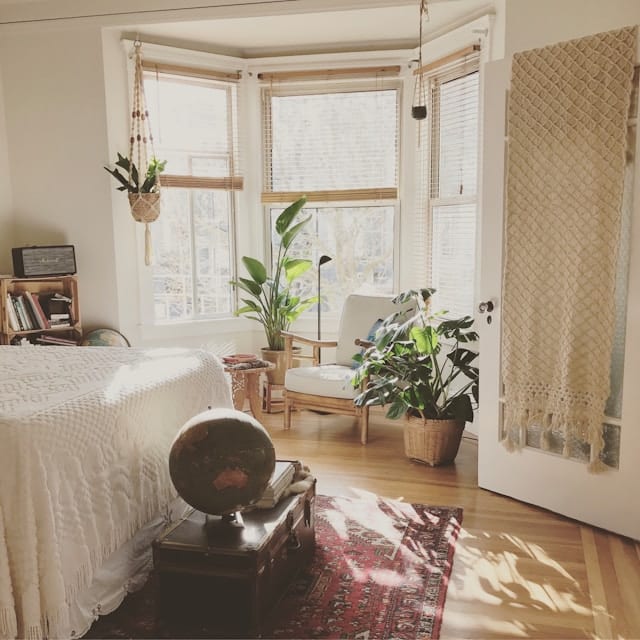What Are the Best Flooring Options for an Allergy-Sufferer’s Bedroom?

The type of flooring in your bedroom can be pivotal in determining whether you will have a peaceful night’s sleep or a night filled with sneezing and wheezing. If you or a family member suffers from allergies or asthma, choosing the right flooring can make a significant difference in the severity of symptoms. The right flooring options can drastically reduce the presence of allergens and other irritants that trigger these conditions. This article will provide you with a detailed guide on the best flooring options for allergy sufferers, including hardwood, laminate, tile, vinyl, and cork.
Hardwood: A Naturally Allergy-Friendly Option
Hardwood flooring is one of the most popular choices for allergy sufferers. Its smooth, flat surface allows for easy cleaning, leaving no room for dust or allergens to hide. Being made from natural wood, hardwood flooring does not emit VOCs (volatile organic compounds), which are harmful chemicals found in some types of synthetic flooring that can trigger allergies.
This might interest you : How to Set Up an Indoor Composting System Without Unpleasant Odors?
Moreover, hardwood’s aesthetic appeal and durability add value to your home. You have various wood options to choose from, including oak, maple, and cherry, all of which offer excellent resistance to allergens. However, remember to avoid using harsh cleaning solutions that could potentially harm the wood.
Laminate Floors: The Low-Maintenance, Allergy-Free Alternative
Laminate flooring is a cost-effective and low-maintenance alternative to hardwood. It is designed to mimic the look of real wood but possesses a more resistant surface, making it less susceptible to scratches and dents. Like hardwood, laminate has a smooth surface that prevents dust and allergens from settling, making it an ideal choice for allergy sufferers.
Have you seen this : How Can You Create a Functional and Attractive Entryway in a Rustic Farmhouse?
One thing to note is that not all laminate flooring is created equal. Some cheaper versions may contain high levels of VOCs, which can exacerbate allergies. As such, selecting a laminate floor with a low VOC rating is crucial for maintaining an allergy-friendly environment.
Tiles: A Hypoallergenic and Stylish Option
Tiles are another excellent flooring option for allergy sufferers. Ceramic or porcelain tiles do not harbor allergens, and their hard surface can easily be kept clean with regular sweeping and mopping. The grout between tiles can sometimes trap dust, but regular cleaning can prevent this.
Tiles also offer a wide range of design options, allowing you to add a personal touch to your bedroom. They are also resistant to humidity and moisture, making them a durable flooring option. However, they can be cold underfoot, so consider this factor when choosing tiles as your bedroom flooring.
Vinyl: An Affordable Allergy-Friendly Choice
Vinyl flooring is an affordable and versatile option that has grown in popularity among allergy sufferers. Its smooth surface makes it easy to clean and maintain, reducing the presence of allergens. Moreover, modern vinyl flooring options are designed to be low-VOC, making them safer for allergy sufferers.
Available in a variety of styles and designs, vinyl flooring offers the look and feel of more expensive flooring options like hardwood and tile without the high cost. It’s important to choose high-quality vinyl flooring, as lower quality options may not be as resistant to allergens and could contain higher VOC levels.
Cork: The Eco-Friendly Solution
Cork flooring is an eco-friendly option that is gaining popularity for its numerous beneficial properties. Its natural antimicrobial and hypoallergenic properties make it an excellent choice for allergy sufferers. Cork flooring’s unique cellular structure also repels dust, hair, and other small particles, making it easy to maintain a clean and healthy environment.
In addition, cork flooring is soft and comfortable underfoot, providing a unique combination of comfort and allergy-friendliness. It is available in a variety of natural colors and finishes, helping you achieve a chic and contemporary look while keeping allergens at bay.
In conclusion, choosing the right flooring for your bedroom is crucial for managing allergies and asthma. Consider factors such as ease of cleaning, resistance to allergens, VOC emissions, and your personal style preferences to select the best option for your needs. Whether you choose hardwood, laminate, tile, vinyl, or cork, you can create a healthier, more comfortable living space.
Flooring Maintenance Tips for Allergy Sufferers
Proper maintenance is key to ensuring that your flooring remains allergy-friendly over time. Regardless of the type of flooring you choose, regular cleaning is necessary to keep allergens at bay. Here are some tips for maintaining your flooring and improving your indoor air quality:
- Regular Sweeping: This is essential for removing dust, pollen, and other allergens that may have settled on your floor. A microfiber mop or duster is recommended because it can capture more dust and dirt than traditional brooms.
- Use a Vacuum with a HEPA Filter: HEPA (High-Efficiency Particulate Air) filters can trap tiny particles including dust mites and pet dander that may trigger allergies or asthma. Vacuuming at least once a week can significantly reduce allergens in your bedroom.
- Avoid Wet Mopping on Hardwood Floors: Excessive moisture can damage hardwood flooring and encourage the growth of mold and mildew. Instead, use a damp mop or a hardwood floor cleaner to keep it clean without damaging the wood.
- Regularly Clean Grout on Tile Floors: The grout between tiles can trap allergens if not cleaned properly. Using a grout cleaner and a grout brush will help you keep your tile floors allergen-free.
- Choose Low VOC Cleaning Products: Some cleaning products contain VOCs that can pollute your indoor air and exacerbate allergies. Opt for non-toxic, low VOC cleaning supplies to maintain an allergy-friendly home.
By following these steps, you will not only maintain the beauty of your floors but also ensure a healthier and more comfortable living environment for allergy and asthma sufferers.
In Conclusion: Creating an Allergy-Friendly Bedroom
Living with allergies or asthma can be challenging, but choosing the right flooring can make a significant difference in the quality of your indoor environment. Each of the flooring options discussed in this article – hardwood, laminate, tile, vinyl, and cork – has its own unique advantages and can help keep your bedroom allergen-free.
Hardwood flooring is a naturally allergy-friendly option due to its smooth surface and lack of VOCs. Laminate floors offer a low-maintenance, allergy-free alternative to hardwood, but it’s important to choose a version with a low VOC rating. Tile floors are hypoallergenic, stylish, and resistant to humidity, while vinyl flooring is an affordable choice that’s easy to clean and available in a variety of designs. Lastly, cork flooring is an eco-friendly solution with natural antimicrobial and hypoallergenic properties.
Remember to consider your personal style, budget, and maintenance preference while selecting the best flooring for your bedroom. Keep in mind that regular cleaning and maintenance are essential for any flooring type to ensure it remains allergy-friendly.
Ultimately, creating an allergy-friendly bedroom is about more than just choosing the right flooring. It’s about creating a safe, comfortable environment where you can relax and breathe easily. With the right choices, you can significantly improve your quality of life and get the peaceful night’s sleep you deserve.
